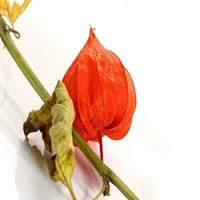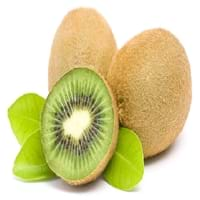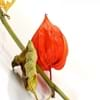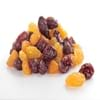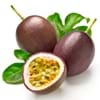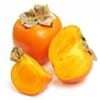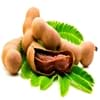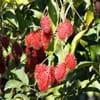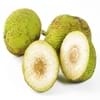Health Benefits
Anti-oxidant properties, Anti-inflammatory properties, Cancer prevention, Maintains healthy cholesterol level, Reduces blood circulation problems, Treatment of cough, fever & sore throat, Treatment of Hypertension
Asthma treatment, Heart care, Prevents constipation, Treatment of skin Diseases
General Benefits
Treatment of asthma, Treatment of cataract, Treatment of hepatitis, Treatment of macular degeneration, Treatment of neurodegenerative diseases
Boosts immune system, Controls blood pressure, Eye care, Helps in weight loss
Skin Benefits
Treatment of Rheumatism & Dermatitis, Treatment of Skin Inflammation
Brightens and lightens complexion, Heals sunburn, Reduces wrinkles, Skin rejuvenation, Treatment of acne, Treatment of dark spots, Treatment of skin diseases
Hair Benefits
Unknown
Prevents hair loss, Promotes longer and healthier hair, Treatment of dandruff
Allergy Symptoms
NA
Abdominal pains, Anaphylaxis, Breathing difficulty, Itching in tongue and other parts of mouth, Itching sensation in throat, Swelling of mouth, tongue or lips, Vomiting
Side Effects
Hypertension, Ventricular Tachycardia
Allergic reaction, Diarrhoea, Skin rash, Possibly unsafe during pregnancy
Best Time to Eat
As a snack in the late afternoon, Eat the fresh ones, avoid mixing with any other foods, don't eat after meal., Morning time (before lunch), Strictly avoid empty stomach
Any time except an hour after meal, Don't consume at night and before bed
Vitamin B5 (Pantothenic Acid)
Not Available
Vitamin B6 (Pyridoxin)
Not Available
Vitamin B9 (Folic acid)
Not Available
Vitamin C (Ascorbic Acid)
Vitamin K (Phyllochinone)
Not Available
Lutein+Zeaxanthin
Not Available
Water Content
Not Available
Calories in Fresh Fruit with Peel
Calories in Fresh Fruit without Peel
Not Available
Not Available
Calories in Frozen Form
Not Available
Not Available
Calories in Dried Form
Not Available
Calories in Canned Form
Not Available
Type
Fruit vegetable
Tropical
Season
Spring, Summer
Spring, Summer, Winter
Varieties
Physalis franchetii, Physalis pruinosa, Physalis peruviana, Physalis heterophylla and Physalis philadelphica
Zhong Hua, Jing Li, Ruan Zao, Mao Hua and Huang Yan
Color
Bright Yellow, Orange
Brown, Green
Inside Color
Orange
Green
Taste
NA
Sour-Sweet, Tangy
Soil Type
NA
Well-drained
Climatic Conditions
NA
Cold, Sunny
Facts about
NA
- The name Kiwi is due to the resemblance with 'Kiwi' bird.
- Animals like monkeys and deer also consume Kiwifruit.
- Originated in china, this fruit is also called as 'Chinese gooseberry.'
Other Countries
NA
Chile, France, Greece, Iran, Japan, New Zealand, Portugal, Turkey, United States of America
Top Importer
Netherlands
United States of America
Top Exporter
Colombia
New Zealand
Botanical Name
Physalis Peruviana
Actinidia deliciosa
Synonym
Alkekengi, Herschellia & Pentaphitrum
Not Available
Subkingdom
Tracheobionta
Tracheobionta
Division
Magnoliophyta
Magnoliophyta
Class
Magnoliopsida
Magnoliopsida
Subclass
Asteridae
Dillenhidae
Family
Solanaceae
Actinidiaceae
Species
Physalis
A. deliciosa
Generic Group
Not Available
Kiwi
Difference Between Physalis and Green Kiwi
We might think that Physalis and Green Kiwi are similar with respect to nutritional value and health benefits. But the nutrient content of both fruits is different. Physalis and Green Kiwi Facts such as their taste, shape, color, and size are also distinct. The difference between Physalis and Green Kiwi is explained here.
The amount of calories in 100 gm of fresh Physalis and Green Kiwi with peel is 77.00 kcal and 61.00 kcal and the amount of calories without peel is Not Available and Not Available respectively. Thus, Physalis and Green Kiwi belong to High Calorie Fruits and Low Calorie Fruits category.These fruits might or might not differ with respect to their scientific classification. The order of Physalis and Green Kiwi is Solanales and Ericales respectively. Physalis belongs to Solanaceae family and Green Kiwi belongs to Actinidiaceae family. Physalis belongs to Physalis genus of Physalis species and Green Kiwi belongs to Actinidia genus of A. deliciosa species. Beings plants, both fruits belong to Plantae Kingdom.
